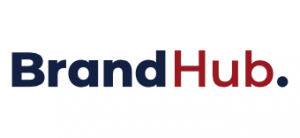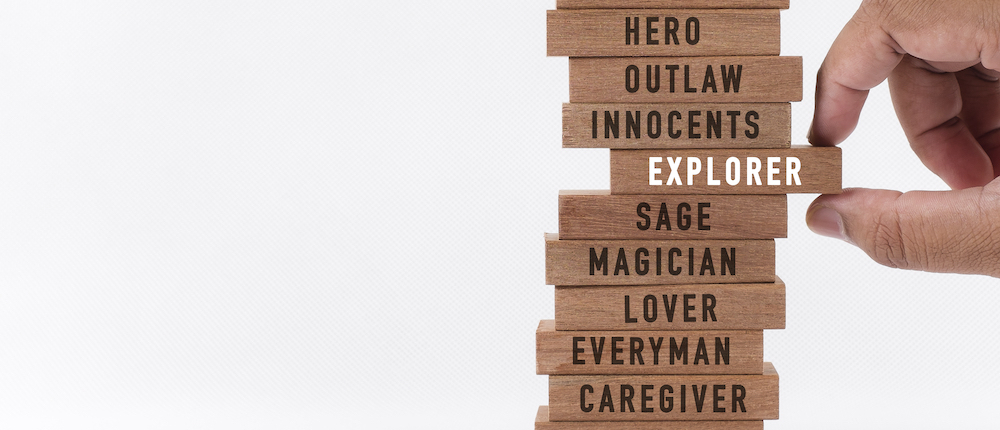Archetypes in branding – Part 2: Longing for Paradise
In our last article, we started a series on a great tool for all brand managers – archetypes. Let’s start by briefly recapping what archetypes are all about. We can thank the Swiss psychiatrist Carl Gustav Jung for their creation. He defined them as, “Forms or images of a collective nature that appear essentially throughout the world as part of myths and also as individual elements of unknown origin.”
From Jung to branding
C.G. Jung defined four groups of archetypes that share similar desires or motives for behavior and action. From the desire for a better tomorrow and freedom, to the desire to leave a legacy or make new and novel connections, to the desire for order and structure. Each of these groups is most often represented by three archetypes expressing in greater depth a particular desire, to which the group one forms the building block. Thus, for example, the desire for structure in the Ruler archetype is expressed in greater depth by the desire for control and order.
Humans are a tangle of needs and drives that are fundamentally built on archetypal patterns. Thus, for example, a person may desire to care for others (the Caregiver archetype). Sometimes, however, as the archetype of the Innocent, he or she longs to make sure that the world is a good place to live and that the person in question is safe. In relation to one’s children, one may unconsciously long to be a Hero for them. Similarly, brands, if they want to connect with their customers and avoid a mere transactional relationship, must find an archetype that is close to their target audience and that is not in contradiction with the thinking and behaviour of all those who represent the brand and thus act consciously or unconsciously to build its image.
A powerful tool when used well
We marketers have been given a great tool to give people much more through the brands we build. Modern marketing and differentiation has long since ceased to be based on product. It is an entity easily copied and therefore without long-term value in terms of competitiveness. Our endeavour, if we want to build a brand sustainably and with long-term success, is to make connections. With each individual customer who will eventually join the mass of loyal ones.
But as it happens in life, every tool can be used well or badly. Or it can be misused. Jumping from one archetype to another depending on how the company or marketing leadership has just changed or which advertising agency is currently working for the company is an example of misuse. Using the power that archetypes give us to build customer trust in a business that wants to win by colluding or stealing from customers is an example of misuse. The desire of responsible marketers and management to give customers more than a product, to help them in self-determination, to give them the positive emotions or feelings they desire, is an example of good intention. Which path we take depends on the goals, values and conscience of each of us.
The first archetypal group – the desire for paradise
The first group we will discuss in our series of articles is expressed by the longing for paradise. This, of course, may represent something different for each of us. But what people all over the world have in common is the desire to find some ideal place where they will be fully themselves and feel at home and safe. For some, the desire for constant discovery and unbridledness (the Explorer archetype) is authentic. For some, they see the path to humanity’s well-being (i.e., an imaginary paradise) through education and intellectual growth (the Sage archetype). Others seek to spread good cheer and positive emotions around, not through joviality, which is close to the Clown archetype, but rather through innocence, honesty and endearing naivety. These are close to the third archetype of the group, the Innocent.
The Explorer archetype – the desire for freedom and exploration of the unknown
Explorers are fearless, they like excitement. They realize that life must be lived and to live is to discover the unknown. They are people who are driven by a desire for adventure, self-discovery, pushing their own boundaries and overcoming more and more challenges. Great representatives of such brands are Jeep, The North Face and NASA. Jeep – cars for the rough, for the off-road, cars that soldiers in many countries and in many different wars (and lands unknown to them) have relied on. The North Face – clothing that is made for those who want to be prepared for all kinds of weather when travelling through the countryside. Oh, and NASA – for many decades representing all those who want to explore the far reaches of space.
The Sage archetype – knowledge as a path to salvation
The second representative of this group is the Sage. A lover of knowledge and its acquisition. He can be found most often in the library, at school or when exploring ideas in nature. The basic values for him are wisdom, knowledge, expertise. Brands like Sage bring information, educate or advise. These include many global media outlets such as the BBC. It’s about educational institutions like Oxford University, or information age companies like Google. For the third mentioned, just think of the regular transformation of their logo on google.com according to various world events of importance. Not to mention the fact that it is originally a search engine – designed to help others find the right information.
Archetype Innocent – let everyone be free and happy and life is full of joy
The last of the three archetypes in the group is the Innocent. It is best represented by the typical representative – Coca Cola. Where there is a bottle of this brand, there is joy, friends, well-being, a happy family at Christmas dinner. Where their typical red truck arrives, it brings cheer with it. We can’t deny the innocent boy his childlike naivety, sincerity, and the sort of rose-colored glasses through which he tries to see the world around him – as a colorful, wonderful place to live, full of wonderful people. Disney is a beautiful representation of Little Innocent. This company often produces films that are loved by children and adults alike. And which, for many of us, allow us to leave the adult world of duty and routine for a while and return to childhood. Let’s also mention Dove, a brand that proclaims that every woman is beautiful. Whether she meets the fashion industry’s standards or not. She can be herself and love herself for who she is.
That’s all for today, my friends. Coming up next, we have archetypes whose primary desire is to leave a mark. Whether positive as Heroes or mesmerizing as Magicians. Or one that makes it clear where they see their place – as the Outlaws do.
Are you interested in the possibilities of archetypes for building your brand?
We have prepared a seminar that will guide you through this.

